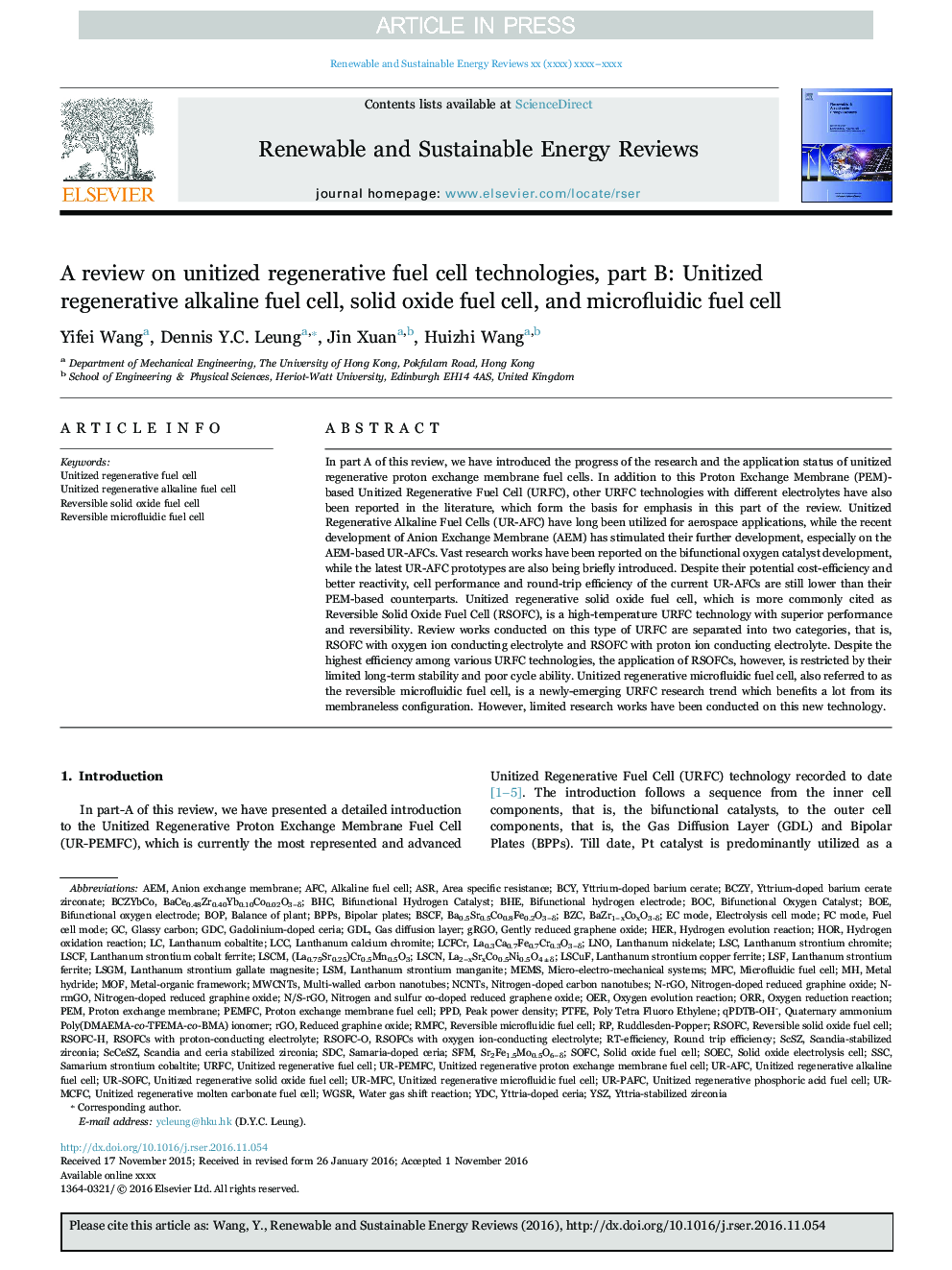| Article ID | Journal | Published Year | Pages | File Type |
|---|---|---|---|---|
| 5482879 | Renewable and Sustainable Energy Reviews | 2017 | 21 Pages |
Abstract
In part A of this review, we have introduced the progress of the research and the application status of unitized regenerative proton exchange membrane fuel cells. In addition to this Proton Exchange Membrane (PEM)-based Unitized Regenerative Fuel Cell (URFC), other URFC technologies with different electrolytes have also been reported in the literature, which form the basis for emphasis in this part of the review. Unitized Regenerative Alkaline Fuel Cells (UR-AFC) have long been utilized for aerospace applications, while the recent development of Anion Exchange Membrane (AEM) has stimulated their further development, especially on the AEM-based UR-AFCs. Vast research works have been reported on the bifunctional oxygen catalyst development, while the latest UR-AFC prototypes are also being briefly introduced. Despite their potential cost-efficiency and better reactivity, cell performance and round-trip efficiency of the current UR-AFCs are still lower than their PEM-based counterparts. Unitized regenerative solid oxide fuel cell, which is more commonly cited as Reversible Solid Oxide Fuel Cell (RSOFC), is a high-temperature URFC technology with superior performance and reversibility. Review works conducted on this type of URFC are separated into two categories, that is, RSOFC with oxygen ion conducting electrolyte and RSOFC with proton ion conducting electrolyte. Despite the highest efficiency among various URFC technologies, the application of RSOFCs, however, is restricted by their limited long-term stability and poor cycle ability. Unitized regenerative microfluidic fuel cell, also referred to as the reversible microfluidic fuel cell, is a newly-emerging URFC research trend which benefits a lot from its membraneless configuration. However, limited research works have been conducted on this new technology.
Keywords
GDCAEMYSZSSCAFCSfMSDCPPDLCCLSFBPPsBOPBHCBZCLSCMBOCGDLN-RGORSOFCBCYURFCScSZWGSRLSGMLNOBCZYYttrium-doped barium cerateLSCNBHEBa0.5Sr0.5Co0.8Fe0.2O3−δMOFPEMFCSOFCORRMWCNTsOERLSCFPTFEBSCFASRPEMSOECLSCMFCMEMSrGOhorBifunctional oxygen electrodeHERBoEBalance of plantRuddlesden-Popperscandia-stabilized zirconiaYttria-stabilized zirconiaLSMSamaria-doped ceriaGadolinium-doped ceriaSolid oxide electrolysis cellsolid oxide fuel cellReversible solid oxide fuel cellUnitized regenerative fuel cellProton exchange membrane fuel cellalkaline fuel cellMicrofluidic fuel cellMicro-electro-mechanical systemsBipolar platesAnion exchange membraneProton exchange membraneLanthanum strontium ferriteLanthanum strontium cobalt ferriteLanthanum strontium manganitelanthanum nickelateGas diffusion layerArea specific resistanceNitrogen-doped carbon nanotubesMulti-walled carbon nanotubesmetal hydrideHydrogen oxidation reactionWater gas shift reactionoxygen evolution reactionHydrogen evolution reactionOxygen reduction reactionmetal-organic frameworkPeak power densityBifunctional oxygen catalystLanthanum cobaltiteGlassy carbonYttria-doped ceria
Related Topics
Physical Sciences and Engineering
Energy
Renewable Energy, Sustainability and the Environment
Authors
Yifei Wang, Dennis Y.C. Leung, Jin Xuan, Huizhi Wang,
